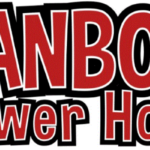
Hulkverines #1
Writer: Greg Pak
Artist: Ario Aninotio
Colorists: Morry Hollowell, Andrew Crossley
Letterer: VC’s Joe Caramanga
Cover Artist: Greg Land & Frank D’Armata
Publisher: Marvel Comics
Review by Nico Sprezzatura

It was always going to come to this, wasn’t it? The moment Marvel announced Weapon H: a new Hulk with the added powers of Wolverine. It seemed inevitable that all three parties would cross paths. In this week’s Hulkverines #1, Clayton Cortez, Bruce Banner, and Logan finally meet, and it’s bad news for everybody.
It needs to be said immediately that the idea of Weapon H is flipping ridiculous, but that’s not necessarily a bad thing. A lot of Marvel’s most popular newer characters have been borne out of simple hybridization concepts. What if Gwen Stacy, but Spider-Man? Spider-Gwen. What if (another, different) Gwen Stacy, but also Deadpool for some reason? Gwenpool. What if Ghost Rider, but kinda Silver Surfer-y, and he’s also Frank Castle? Cosmic Ghost Rider. When you’re a company with as many characters as Marvel, sometimes it’s easier to simply combine some of them rather than launching entirely new properties that may-or-may-not catch on. Enter Weapon H.
Having only read the first issue of his recently concluded series, I will say Hulkverines #1 makes it easy to catch on to Weapon H’s backstory. For the unfamiliar, writer Greg Pak (who’s never seen an iffy concept he couldn’t make at least halfway readable) provides enough context as to whom Clayton Cortez is: former military man who’s turned into a bastardization of Wolverine and The Hulk by Weapon X. That’s basically it. There’s more to his characterization than that (i.e. he’s got a wife and young children) but that’s really all you need to know right now.
When Clayton starts hulking out during a sneezing fit, he quickly comes into contact with Bruce Banner, recently reborn as the “Immortal” Hulk. Bruce’s new status quo is also economically explained: no matter how many times he’s apparently killed, Bruce comes back to life through his gamma-irradiated alter ego, who’s now fully cognizant and capable of intelligent (often murderous) thought. And because this is a Marvel comicbook that’s even slightly tangentially about the dead-no-more Wolverine, it doesn’t take long for him to show up either. Add the wrinkle of a familiar Hulk villain pulling everybody’s strings, and you got the makings of a beat-em-up limited series.
Like I alluded to above, Pak is seemingly incapable of writing a bad comicbook, even if the odds are stacked against him. While I’m not overly interested in Weapon H as a concept, I can’t say I was ever bored while reading Hulkverines #1. The characters sound like themselves; the pacing moves along at an expedient clip; and there’s plenty of action for artist Ario Aninotio to deliver.
I’m not familiar with Aninotio’s work, but based on his output here, he definitely seems suited to drawing a Hulk title. There’s a Marco Checchetto-esque quality to his art that I find very appealing: the right amount of softness combined with hardness. His Hulk and Weapon H also both look properly gigantic to scale, which is really all you could ask from someone drawing them. There’s a double splash spread wherein our Hulks begin their initial clash, and it’s extremely well done, showing both men as they transform from their normal human selves to their monstrous abominations. Colorists Morry Hollowell and Andrew Crossley are especially crucial to these scenes; while Hulk and Weapon H diverge visually in some ways, it would be easy to mistake one for the other if you couldn’t discern Hulk’s green from Weapon H’s gray.
Lastly, some great lettering work from VC’s Joe Caramanga, as usual. When you’re lettering a Hulk book, it’s a pretty safe assumption to expect some big ass letters as well.
The Verdict: Buy it.
It’s probably not for everyone, but if you’re a diehard Hulk fan with a Wolverine rising, then you can’t go wrong with Hulkverines #1.

![[REVIEW] THE COMICS AGENDA: EXIT LIGHT, ENTER NIGHT](https://geekd-out.com/wp-content/uploads/2017/11/comics-agenda-2-150x150.jpg)

